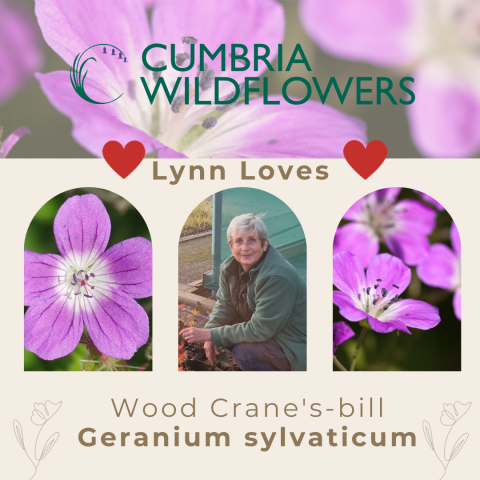Wood Cranesbill: Lynn's Chosen Marvel
At Cumbria Wildflowers, every petal tells a story, and Lynn, one of our esteemed staff members, has chosen Wood Cranesbill (Geranium sylvaticum) as her favourite wildflower. Also known as Geranium sylvaticum in the language of botany, this enchanting bloom holds a special place in our heart.
Nature has bestowed upon us a myriad of beautiful and fascinating wildflowers, each with its unique charm and significance. Among these, the Wood Cranesbill wildflower stands out as a delicate and captivating specimen. In this blog post, we will delve into the enchanting world of Wood Cranesbill wildflowers, exploring their characteristics, habitat, and the cultural significance they hold.
The Allure of Wood Cranesbill
Geranium sylvaticum, commonly known as Wood Cranesbill, is a perennial wildflower belonging to the Geraniaceae family. What sets this species apart is its exquisite appearance – dainty, lavender-blue petals arranged delicately around a central cluster of stamens and pistils. The intricate veins on its petals add to its allure, making it a favourite among wildflower enthusiasts and nature lovers alike.
Habitat and Distribution
Wood Cranesbill wildflowers are native to Europe and Asia, where they can be found gracing woodlands, meadows, and damp grassy areas. Their preference for partially shaded environments underlines their adaptability and resilience. In the wild, these wildflowers create picturesque carpets under the shade of trees, enhancing the natural beauty of their surroundings.
Life Cycle and Adaptations
Wood Cranesbill wildflowers have a fascinating life cycle. They begin as tiny seeds, often dispersed by wind or animals, and develop into small, low-growing rosettes during their first year. In the following years, these rosettes produce elegant, five-petaled flowers during the spring and summer months. The plant's ability to thrive in varying light conditions and soil types showcases its adaptive nature, making it a resilient species in the wild.
Cultural Significance
Throughout history, wildflowers have held symbolic meanings in various cultures. Wood Cranesbill wildflowers, with their delicate beauty and vibrant colour, are no exception. In Victorian flower language, these wildflowers are often associated with modesty and elegance, conveying heartfelt emotions and messages. Additionally, they have found their place in herbal medicine, where they are believed to possess certain medicinal properties, although it is essential to consult experts before using them for any medicinal purposes.
Conservation Efforts
While Wood Cranesbill wildflowers are not considered endangered, the preservation of their natural habitats is crucial. Conservation efforts and responsible wildflower enthusiasts can help protect these delicate beauties and maintain the delicate balance of our ecosystems. Avoiding picking wildflowers in the wild and supporting local conservation initiatives are simple yet effective ways to contribute to their preservation.
In Summary:
Wood Cranesbill wildflowers are not just exquisite blooms in the wild; they are a testament to nature's artistry and resilience. Their delicate petals and subtle hues remind us of the intricate beauty that surrounds us and the importance of preserving these natural wonders for generations to come. As we marvel at the elegance of Wood Cranesbill wildflowers, let us also appreciate the intricate web of life that sustains them, fostering a deeper connection with the natural world.
When you subscribe to the blog, we will send you an e-mail when there are new updates on the site so you wouldn't miss them.



Comments